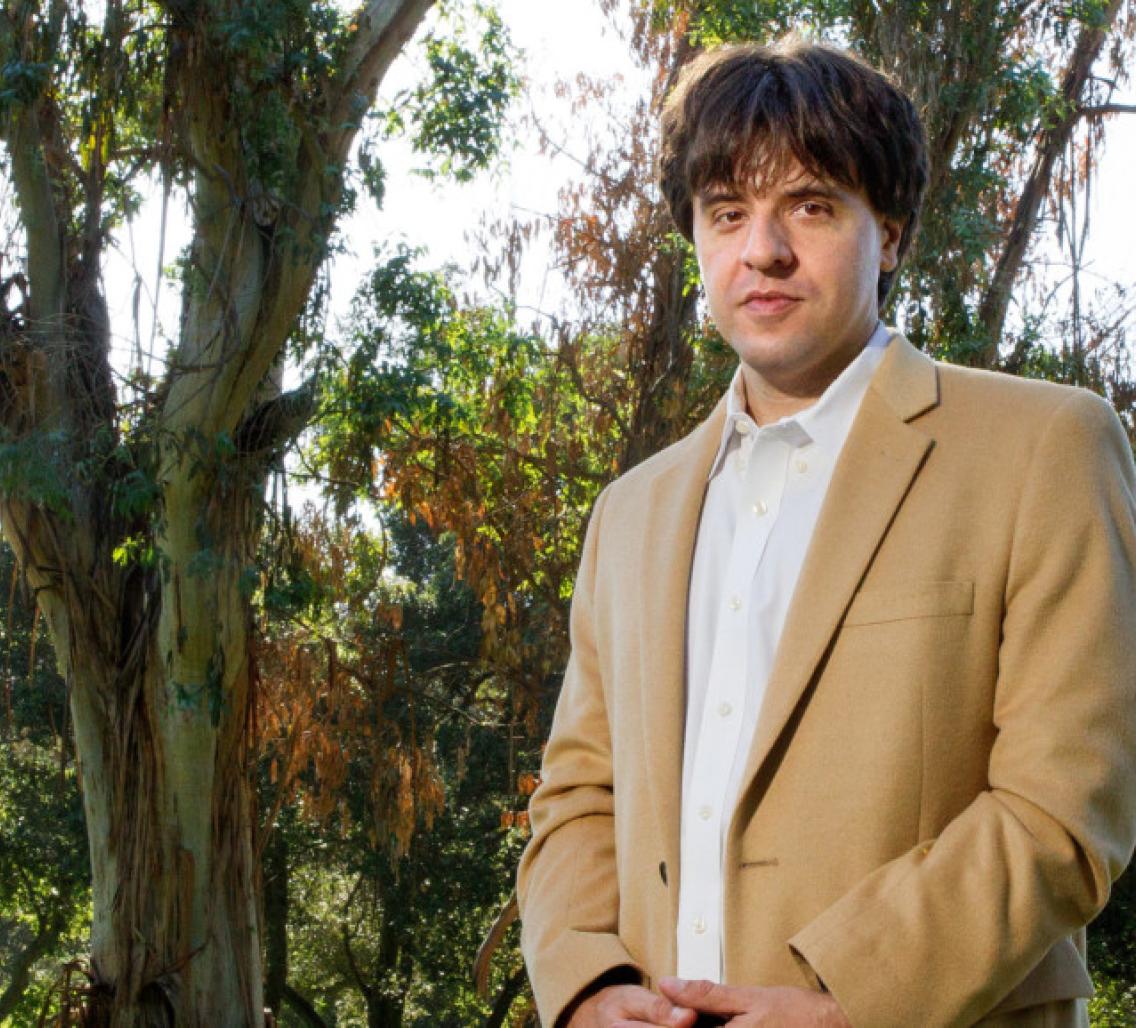Stanford psychiatrist, engineer and neuroscientist Karl Deisseroth wins 2018 Kyoto Prize

By Bruce Goldman
Stanford psychiatrist, engineer and neuroscientist Karl Deisseroth, MD, PhD, has just won the heralded 2018 Kyoto Prize in advanced technology for his invention and application of optogenetics, an unparalleled method for understanding how the brain works.
The sheer number of connections forged by nerve cells to one another in the human brain (nobody's counted them all, but it could easily be in the quadrillions) qualifies the organ as a front-runner candidate in the contest for "most complicated object in the known universe."
From those nerve cells emanate myriad fibers along which pulses of information, in the form of electrical signals, race like sports cars on a 3D speedway, I wrote in an article called "Head Lights" in our magazine, Stanford Medicine, some years ago. And somehow you never hear about a 40-pulse pile-up. That's organization!
Yet, I proceeded to ask rhetorically, what do you see when you actually look at a human brain? The answer:
Inscrutability. A shimmering, gelatinous mass of fatty fibers, snaking and threading and heading who knows where. What if you could install traffic signals along the neurons threading through a living brain, so that you could start or stop traffic on them and observe the effect? Maybe you could learn something.
Over the last decade and a half, Deisseroth has pioneered, perfected and, increasingly, put to work a brain-exploration technology called optogenetics, a method of either starting or stopping — take your pick! — traffic along specified nerve tracts in the brain of a living, wide-awake, more or less freely moving animal, and then watching what happens.
Cut off traffic in one tract, and the animal walks in a circle. Cut it off in another, and the animal shows signs of Parkinson's disease, or depression. Speed up traffic elsewhere in the animal's brain, and its behavior betrays anxiety or seems suggestive of schizophrenia. Boost the ratio of nerve cells' excitatory versus inhibitory signaling elsewhere, and signs of autism emerge.
From our news release announcing the award:
Optogenetics allows scientists to manipulate the activity of individual nerve cells, or groups of them, in an animal’s brain. Genes encoding light-sensitive proteins, called opsins, are inserted into specific nerve cells. Then a pulse of laser light, delivered through a hair-thin optical fiber implanted in the brain, can turn these cells’ signaling activity on or off. By observing how the animal behaves when the signaling is either active or inactive, scientists can deduce the cells’ function.
The tool has enabled researchers to better understand brain disorders such as schizophrenia, depression and Parkinson’s disease.
Awarded annually by the Kyoto, Japan-based Inamori Foundation, the Kyoto Prize is priceless in terms of prestige. (But it does include a gift of 100 million yen, equivalent to nearly $1 million).